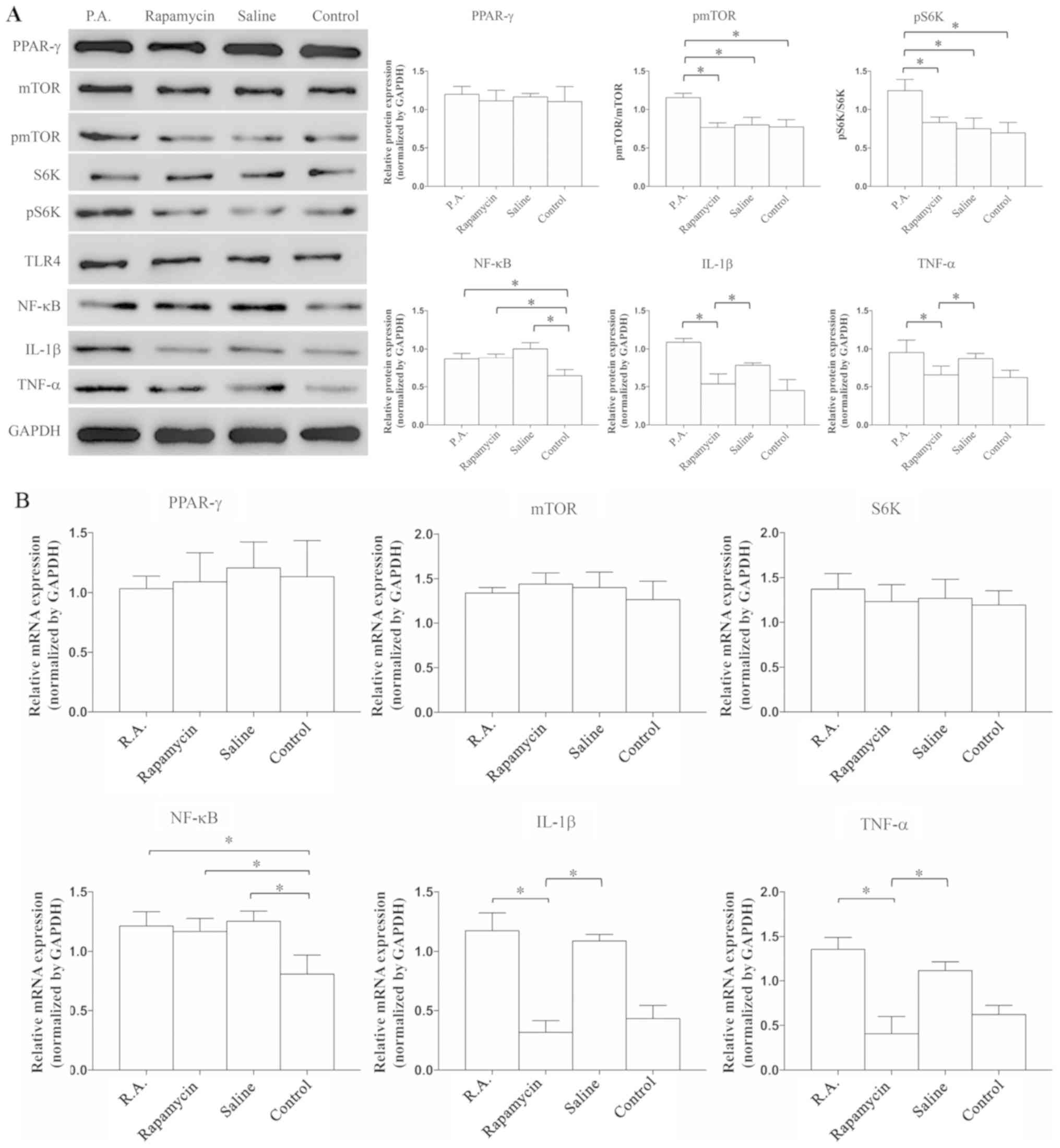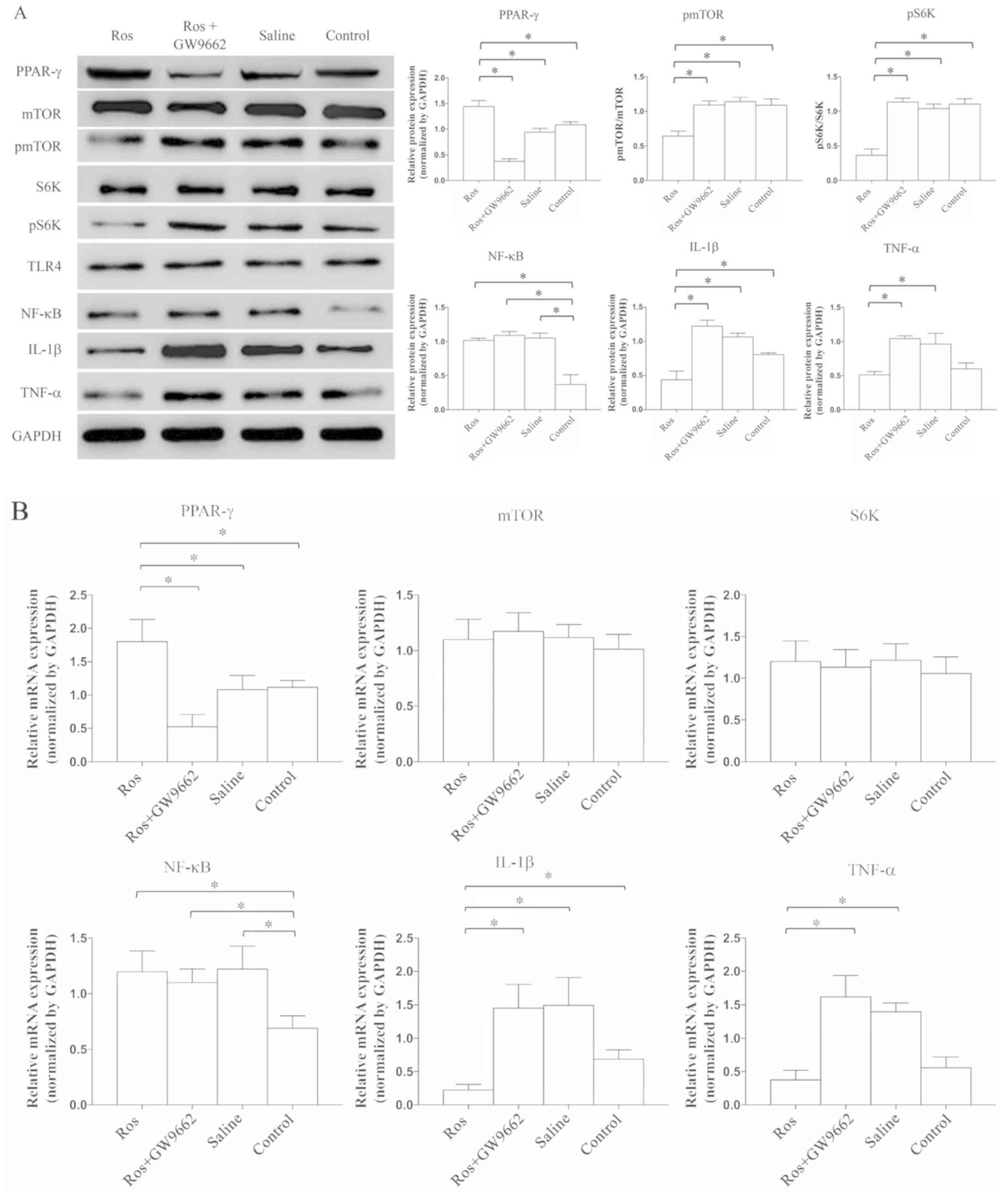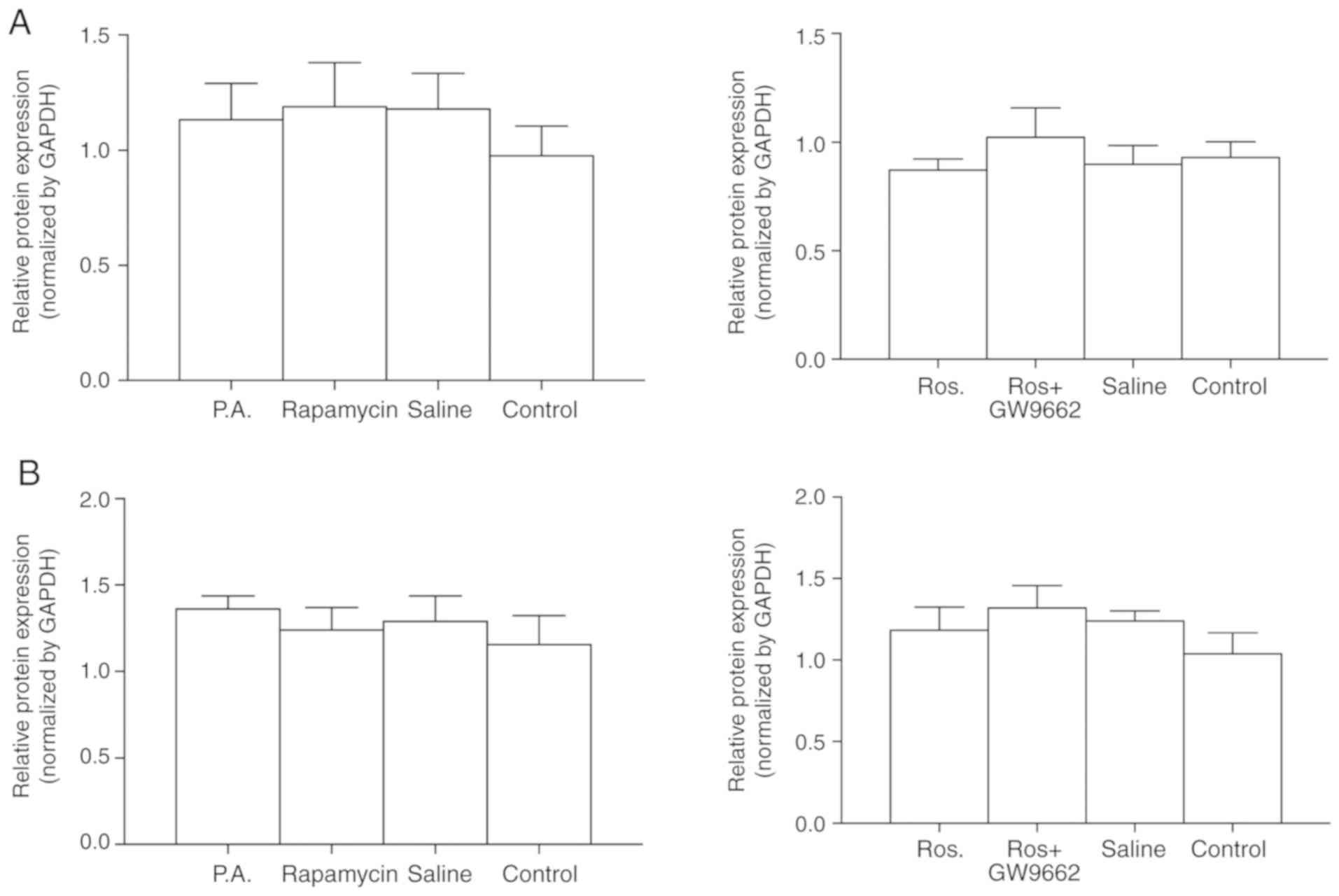|
1
|
An SJ, Kim TJ and Yoon BW: Epidemiology,
risk factors, and clinical features of intracerebral hemorrhage: An
update. J Stroke. 19:3559–10. 2017. View Article : Google Scholar
|
|
2
|
Weimar C and Kleine-Borgmann J:
Epidemiology, prognosis and prevention of non-traumatic
intracerebral hemorrhage. Curr Pharm Des. 23:2193–2196. 2017.
View Article : Google Scholar : PubMed/NCBI
|
|
3
|
Zheng H, Chen C, Zhang J and Hu Z:
Mechanism and therapy of brain edema after intracerebral
hemorrhage. Cerebrovasc Dis. 42:155–169. 2016. View Article : Google Scholar : PubMed/NCBI
|
|
4
|
Shao Z, Tu S and Shao A:
Pathophysiological mechanisms and potential therapeutic targets in
intracerebral hemorrhage. Front Pharmacol. 10:10792019. View Article : Google Scholar : PubMed/NCBI
|
|
5
|
Zhang Z, Zhang Z, Lu H, Yang Q, Wu H and
Wang J: Microglial polarization and inflammatory mediators after
intracerebral hemorrhage. Mol Neurobiol. 54:1874–1886. 2017.
View Article : Google Scholar : PubMed/NCBI
|
|
6
|
Chang CF, Wan J, Li Q, Renfroe SC, Heller
NM and Wang J: Alternative activation-skewed microglia/macrophages
promote hematoma resolution in experimental intracerebral
hemorrhage. Neurobiol Dis. 103:54–69. 2017. View Article : Google Scholar : PubMed/NCBI
|
|
7
|
Hemonnot AL, Hua J, Ulmann L and Hirbec H:
Microglia in Alzheimer disease: Well-known targets and new
opportunities. Front Aging Neurosci. 11:2332019. View Article : Google Scholar : PubMed/NCBI
|
|
8
|
Kanazawa M, Ninomiya I, Hatakeyama M,
Takahashi T and Shimohata T: Microglia and monocytes/macrophages
polarization reveal novel therapeutic mechanism against stroke. Int
J Mol Sci. 18:21352017. View Article : Google Scholar
|
|
9
|
Jewell JL and Guan KL: Nutrient signaling
to mTOR and cell growth. Trends Biochem Sci. 38:233–242. 2013.
View Article : Google Scholar : PubMed/NCBI
|
|
10
|
Li X, Gu S, Ling Y, Shen C, Cao X and Xie
R: p53 inhibition provides a pivotal protective effect against
ischemia-reperfusion injury in vitro via mTOR signaling. Brain Res.
1605:31–38. 2015. View Article : Google Scholar : PubMed/NCBI
|
|
11
|
Xie R, Wang P, Cheng M, Sapolsky R, Ji X
and Zhao H: Mammalian target of rapamycin cell signaling pathway
contributes to the protective effects of ischemic postconditioning
against stroke. Stroke. 45:2769–2776. 2014. View Article : Google Scholar : PubMed/NCBI
|
|
12
|
Xie R, Cheng M, Li M, Xiong X, Daadi M,
Sapolsky RM and Zhao H: Akt isoforms differentially protect against
stroke-induced neuronal injury by regulating mTOR activities. J
Cereb Blood Flow Metab. 33:1875–1885. 2013. View Article : Google Scholar : PubMed/NCBI
|
|
13
|
Wang JP and Zhang MY: Role for target of
rapamycin (mTOR) signal pathway in regulating neuronal injury after
intracerebral hemorrhage. Cell Physiol Biochem. 41:145–153. 2017.
View Article : Google Scholar : PubMed/NCBI
|
|
14
|
Lu Q, Gao L, Huang L, Ruan L, Yang J,
Huang W, Li Z, Zhang Y, Jin K and Zhuge Q: Inhibition of mammalian
target of rapamycin improves neurobehavioral deficit and modulates
immune response after intracerebral hemorrhage in rat. J
Neuroinflammation. 11:442014. View Article : Google Scholar : PubMed/NCBI
|
|
15
|
Durocher M, Ander BP, Jickling G, Hamade
F, Hull H, Knepp B, Liu DZ, Zhan X, Tran A, Cheng X, et al:
Inflammatory, regulatory, and autophagy co-expression modules and
hub genes underlie the peripheral immune response to human
intracerebral hemorrhage. J Neuroinflammation. 16:562019.
View Article : Google Scholar : PubMed/NCBI
|
|
16
|
Xie R, He WQ, Shen M, Shou XF, Wang YF,
Bao WM and Zhao Y: Specific inhibition of mTOR pathway induces
anti-proliferative effect and decreases the hormone secretion in
cultured pituitary adenoma cells. J Neurooncol. 125:79–89. 2015.
View Article : Google Scholar : PubMed/NCBI
|
|
17
|
Seargent JM, Yates EA and Gill JH: GW9662,
a potent antagonist of PPARgamma, inhibits growth of breast tumour
cells and promotes the anticancer effects of the PPARgamma agonist
rosiglitazone, independently of PPARgamma activation. Br J
Pharmacol. 143:933–937. 2004. View Article : Google Scholar : PubMed/NCBI
|
|
18
|
Armartmuntree N, Murata M, Techasen A,
Yongvanit P, Loilome W, Namwat N, Pairojkul C, Sakonsinsiri C,
Pinlaor S and Thanan R: Prolonged oxidative stress down-regulates
Early B cell factor 1 with inhibition of its tumor suppressive
function against cholangiocarcinoma genesis. Redox Biol.
14:637–644. 2018. View Article : Google Scholar : PubMed/NCBI
|
|
19
|
Fourrier C, Remus-Borel J, Greenhalgh AD,
Guichardant M, Bernoud-Hubac N, Lagarde M, Joffre C and Layé S:
Docosahexaenoic acid-containing choline phospholipid modulates
LPS-induced neuroinflammation in vivo and in microglia in vitro. J
Neuroinflammation. 14:1702017. View Article : Google Scholar : PubMed/NCBI
|
|
20
|
Li D, Liu F, Yang T, Jin T, Zhang H, Luo X
and Wang M: Rapamycin protects against neuronal death and improves
neurological function with modulation of microglia after
experimental intracerebral hemorrhage in rats. Cell Mol Biol
(Noisy-le-grand). 62:67–75. 2016.PubMed/NCBI
|
|
21
|
Gao X, Chen W, Li J, Shen C, Zhou P, Che
X, Li X and Xie R: The protective effect of alpha-lipoic acid
against brain ischemia and reperfusion injury via mTOR signaling
pathway in rats. Neurosci Lett. 671:108–113. 2018. View Article : Google Scholar : PubMed/NCBI
|
|
22
|
Lai JL, Liu YH, Liu C, Qi MP, Liu RN, Zhu
XF, Zhou QG, Chen YY, Guo AZ and Hu CM: Indirubin inhibits
LPS-induced inflammation via TLR4 abrogation mediated by the NF-kB
and MAPK signaling pathways. Inflammation. 40:1–12. 2017.
View Article : Google Scholar : PubMed/NCBI
|
|
23
|
Liu AH, Wu YT and Wang YP: MicroRNA-129-5p
inhibits the development of autoimmune encephalomyelitis-related
epilepsy by targeting HMGB1 through the TLR4/NF-κB signaling
pathway. Brain Res Bull. 132:139–149. 2017. View Article : Google Scholar : PubMed/NCBI
|
|
24
|
Chen JQ, Szodoray P and Zeher M: Toll-like
receptor pathways in autoimmune diseases. Clin Rev Allergy Immunol.
50:1–17. 2016. View Article : Google Scholar : PubMed/NCBI
|
|
25
|
Zhang J, Zheng Y, Luo Y, Du Y, Zhang X and
Fu J: Curcumin inhibits LPS-induced neuroinflammation by promoting
microglial M2 polarization via TREM2/TLR4/ NF-κB pathways in BV2
cells. Mol Immunol. 116:29–37. 2019. View Article : Google Scholar : PubMed/NCBI
|
|
26
|
Shi H, Wang XL, Quan HF, Yan L, Pei XY,
Wang R and Peng XD: Effects of betaine on LPS-stimulated activation
of microglial M1/M2 phenotypes by suppressing TLR4/NF-κB pathways
in N9 cells. Molecules. 24:3672019. View Article : Google Scholar
|
|
27
|
Kutsenko NL, Vesnina LE and Kaidashev IP:
Pioglitazone, an activator of PPAR-gamma, reduces the expression of
kB nuclear factor and inhibits apoptosis in mononuclear cells of
peripheral blood in vitro. Fiziol Zh. 58:33–38. 2012. View Article : Google Scholar : PubMed/NCBI
|
|
28
|
Wang JS, Xiao WW, Zhong YS, Li XD, Du SX,
Xie P, Zheng GZ and Han JM: Galectin-3 deficiency protects
lipopolysaccharide-induced chondrocytes injury via regulation of
TLR4 and PPAR-gamma-mediated NF-κB signaling pathway. J Cell
Biochem. 120:10195–10204. 2019. View Article : Google Scholar : PubMed/NCBI
|
|
29
|
Tan J, Applegate TJ, Liu S, Guo Y and
Eicher SD: Supplemental dietary L-arginine attenuates intestinal
mucosal disruption during a coccidial vaccine challenge in broiler
chickens. Br J Nutr. 112:1098–1109. 2014. View Article : Google Scholar : PubMed/NCBI
|
|
30
|
Yu M, Kang X, Xue H and Yin H: Toll-like
receptor 4 is up-regulated by mTOR activation during THP-1
macrophage foam cells formation. Acta Biochim Biophys Sin
(Shanghai). 43:940–947. 2011. View Article : Google Scholar : PubMed/NCBI
|
|
31
|
Zhou M, Xu W, Wang J, Yan J, Shi Y, Zhang
C, Ge W, Wu J, Du P and Chen Y: Boosting mTOR-dependent autophagy
via upstream TLR4-MyD88-MAPK signalling and downstream NF-κB
pathway quenches intestinal inflammation and oxidative stress
injury. EBioMedicine. 35:345–360. 2018. View Article : Google Scholar : PubMed/NCBI
|


















